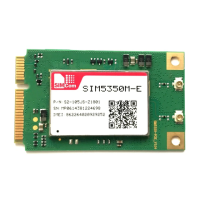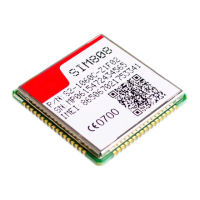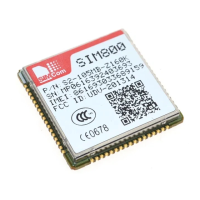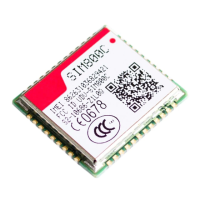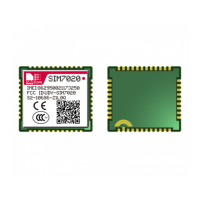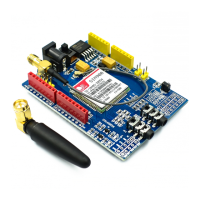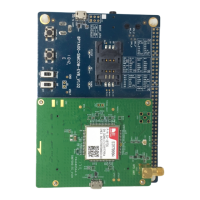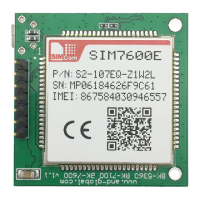SIM5300E AT Command Manual V1.02
AT+CSCLK=<n> OK
ERROR
Parameters <n>
0 Disable slow clock, module will not enter sleep mode.
1
Enable slow clock, it is controlled by DTR. When DTR is high,
module can enter sleep mode. When DTR changes to low level
or gotten the port data, module can quit sleep mode.
2 Enable slow clock automatically. When there is no interrupt (on
air and hardware such as GPIO interrupt or data in serial port),
module can enter sleep mode. Otherwise, it will quit sleep
mode.
Reference Note:
There are two caveats when you want to quit sleep mode in mode 2:
1, You should input some characters (at least one) to awake module.
2, An interval time of 100ms more is necessary between waking
characters and following AT commands, otherwise the waking characters
will not be discarded completely.
5.2.8 AT+CENG Switch on or off Engineering Mode
AT+CENG Switch on or off Engineering Mode
Test Command
AT+CENG=?
Response
TA returns the list of supported modes.
+CENG: (list of supported <mode>s),(list of supported <Ncell>s)
OK
Read Command
AT+CENG?
Response
Engineering Mode is designed to allow a field engineer to view and test the
network information received by a handset, when the handset is either in idle
mode or dedicated mode (that is: with a call active). In each mode, the
engineer is able to view network interaction for the "serving cell" (the cell the
handset is currently registered with) or for the neighboring cells.
TA returns the current engineering mode. The network information including
serving cell and neighboring cells are returned only when <mode>=1 or
<mode> = 2. <cell> carry with them corresponding network interaction.
In 2G mode
+CENG: <mode>,<CELLID>
[+CENG: <cell>,"<arfcn>,<rxl>,<rxq>,<mcc>,<mnc>,<bsic>,<cellid>,<rla>,
<txp>,<lac>,<TA>
<CR><LF>+CENG:
<cell>,"<arfcn>,<rxl>,<bsic>[,<cellid>,]<mcc>,<mnc>,<lac>"…]

